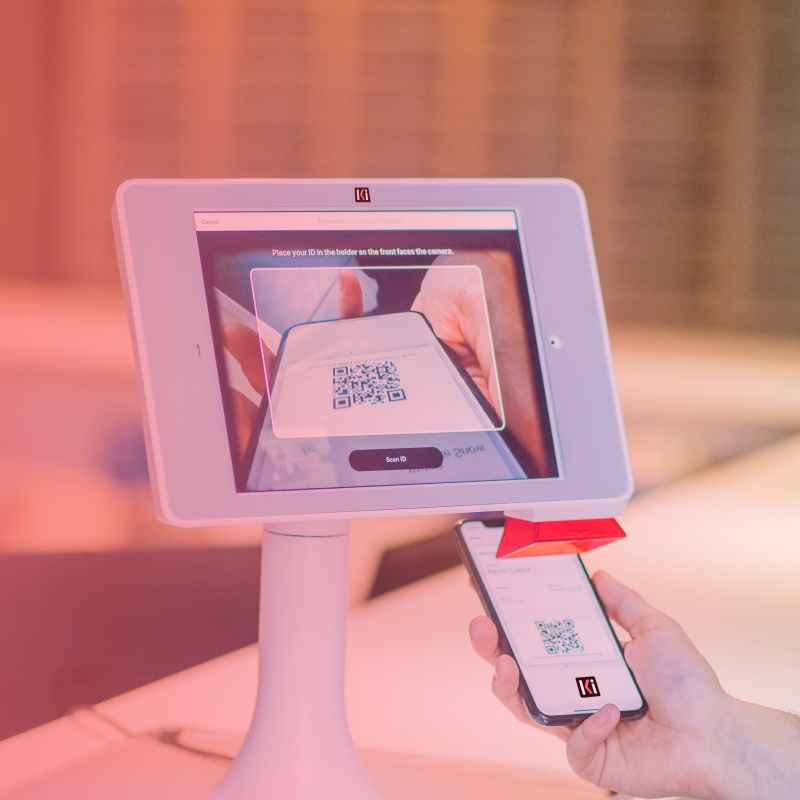What is a Self Service Kiosk?

A self service kiosk is a touch screen terminal that combines hardware and software to form an interactive device that provides instant access to information for commerce, communication, education or entertainment. Such interactive devices have become a common fixture in recent years. Whether you want a quick way to pay at grocery checkouts, order at a fast food chain, or use information points in airports, train stations, at conferences or events, these digital devices come in handy and are available in a variety of shapes, sizes and designs.
History of the Self Service Kiosk
The concept and evolution of ‘self-service’ began in the UK way back in the 1950s. For quite some time shops feature a counter and a couple of staff responsible for serving orders and attending to other needs of customers.
The transition to people independently serving themselves in commercial settings took decades. Even during the 60s and 70s, self-service in shops or at gas stations took a while to become the norm. The ATM was invented in 1967, but still self-service wasn’t widely available until the 1990s.
It was a gradual progression, and self-service eventually found its way to kiosks that allowed people to check out and pay without the involvement of another human being. Later on, the self service kiosk wasn’t only limited to retail shops and supermarkets. In settings other than retail, for instance in airports and tourist destinations, kiosks that hand out information became more common since the turn of the millennium and a technology overhaul revolutionized the experience for the public since then.
Different Types of Self Service Kiosk Applications
Public Information Kiosk
This offers convenient services like headline news, live messaging, location directions, among others. Museums, national parks, historical sites and other tourist attractions often use self service kiosks as a means for efficiently conveying information. The kiosks allow guests to read or watch videos of specific topics at their own pace and in an interactive manner.
Financial Services Kiosk
This serves as a great aggregation point for a host of financial services including money orders, online banking, check cashing, bill payments, and e-commerce. It allows customers to execute transactions that typically require the help of a bank teller. This type of kiosk is occasionally referred to as ‘bank-in-a-box” and the best example is the Vcom units used in 7-11stores in the U.S.
Ticketing Kiosk
This kiosk is commonly used in airports, amusement parks, lotteries, movie theater chains, and stadiums. A number of theme parks like Disney have outdoor ticketing kiosks. Most cruise ships also use them for their passengers. The ticket halls of train stations like Metro Trains and V/Line also have kiosks that sell tickets and passes. This type has grown in popularity because it’s time-saving, convenient and practical.
Internet Kiosk
This is a standalone terminal that offers access to the Internet. It is typically installed in hotel lobbies, hospital waiting rooms, long-term care facilities, or airports for fast access to email or web pages. Some of these are free while others are based on a payment model similar to Internet cafés or vending machines. A typical Internet kiosk has a bill acceptor or a credit card swipe, and almost always has a monitor, a mouse and a keyboard.
Photo Kiosk
This kiosk allows users to print digital images. The prime example started with Kodak which at one point had more than 100,000 units across the U.S. There are two major types of photo kiosks: one is the digital order station which is usually found in retail spaces and allows people to place orders for prints, and the other type is the instant print station which makes use of internal printers to quickly produce photo prints for self-serve paying customers. It is frequently located in public areas and payments are also processed by the machine itself.
Hospital Registration & Check-in Kiosk
Medical facilities are now increasingly relying on self-service kiosks so patients can perform routine activities. Such kiosks allow patients to check in for their appointments and update their profile in order to minimize the need to line up and get assisted by a registration clerk. Studies show that with the use of a kiosk, a large hospital can improve data quality, shorten queues, and reduce its registration staff by up to 30%.
So Why Does My Business Need a Self Service Kiosk?
Today’s self service kiosks bring together the iconic vending machine with state-of-the-art communications and sophisticated robotic and mechanical internals. They have proven to be a groundbreaking innovation that made life easier in a variety of scenarios. Whether you’re shopping, checking in for a physician’s check up, or parking at the airport before flying off on a much needed vacation – self-service kiosks play a crucial part in cutting time and reducing effort from many facets of our everyday lives.
At Jhavtech Studios, we offer a range of software, apps, and mounting solutions to meet your specific needs and quick turnaround times. Whether you need a store information kiosk, a survey system, a test taking environment or a banking application, we can create the perfect solution for you.

